As the chill of winter dissolves into the warm embrace of spring, March Festivals herald a period of renewal, rejuvenation, and rejoicing across cultures and communities.
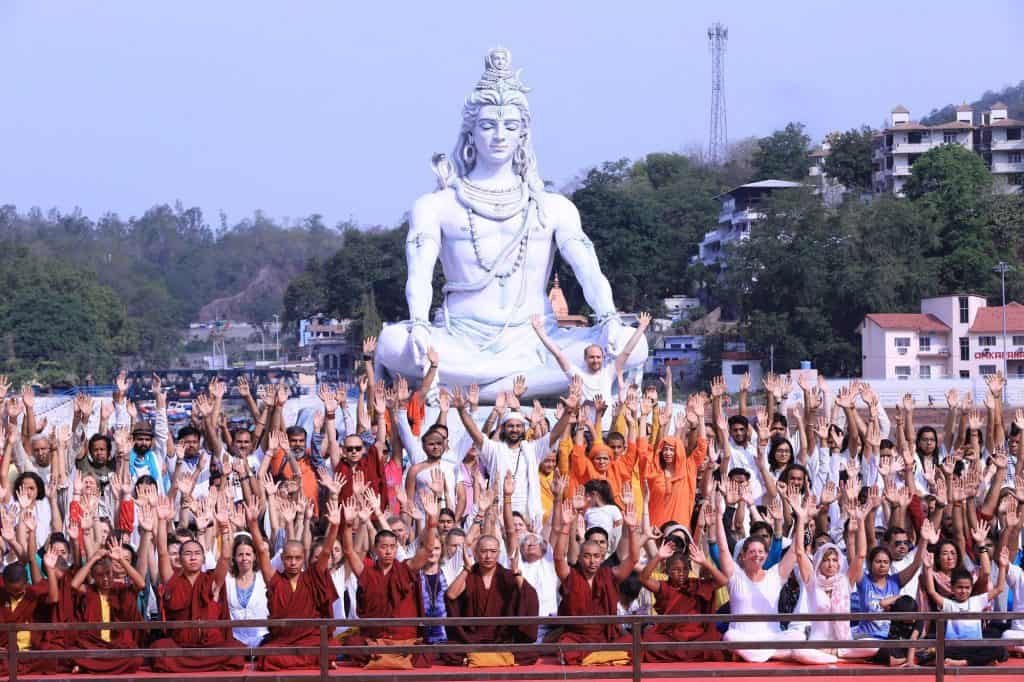
Due to the rich tapestry of religions flourishing within India, the festive spirit remains vibrant throughout the year. March, in particular, emerges as a splendid season across the country. The Spring graces the land with its vibrant hues, painting a picturesque landscape.
The weather strikes a delightful balance, where a gentle breeze reminiscent of winter coexists with the welcoming warmth of the impending summer sun. Beyond the natural beauty, March becomes even more enchanting with the plethora of festivals that adorn the calendar, amplifying the joyous atmosphere.
It’s a time when communities come together, celebrating diverse traditions and cultural heritage. Thus, March not only heralds the arrival of a visually stunning season but also embodies the spirit of unity and festivity that characterizes India’s cultural mosaic.
Here is the list of regional festivals in March which delights the festive season.
International Yoga Festival, Rishikesh
In homage to its ancient gift of yoga, India hosts World Yoga Week with grandeur and finesse. Among the tranquil havens of the world, Rishikesh in Uttrakhand emerges as a pinnacle of serenity, nestled alongside the majestic Ganga River.
Blessed with myriad temples, this city exudes an aura of peace that envelops all who tread its sacred grounds. The International Yoga Festival, a hallmark of this week-long celebration, serves as the pinnacle of spiritual rejuvenation. Held across numerous ashrams in Rishikesh, this festival offers a profound opportunity to harmonize mind, body, and soul. It beckons seekers from far and wide to immerse themselves in the ancient wisdom and practices of yoga.
Each ashram, with its unique ambience and teachings, extends an invitation to partake in this transformative experience. Whether drawn to the traditional teachings of one ashram or the innovative practices of another, participants find themselves enveloped in an atmosphere of introspection and growth. World Yoga Week in Rishikesh is not merely an event; it is a pilgrimage of self-discovery and holistic wellness, beckoning all who seek to synchronize their being with the rhythm of the universe.
Jaipur Elephant Festival
One of the vibrant celebrations in March, the Jaipur Elephant Festival in Rajasthan typically aligns with the festivities of Holi, offering a captivating glimpse into the cultural richness of Rajasthan. This festival serves as an homage to the cherished bond between humans and elephants, showcasing a majestic procession of adorned pachyderms parading through the city streets.
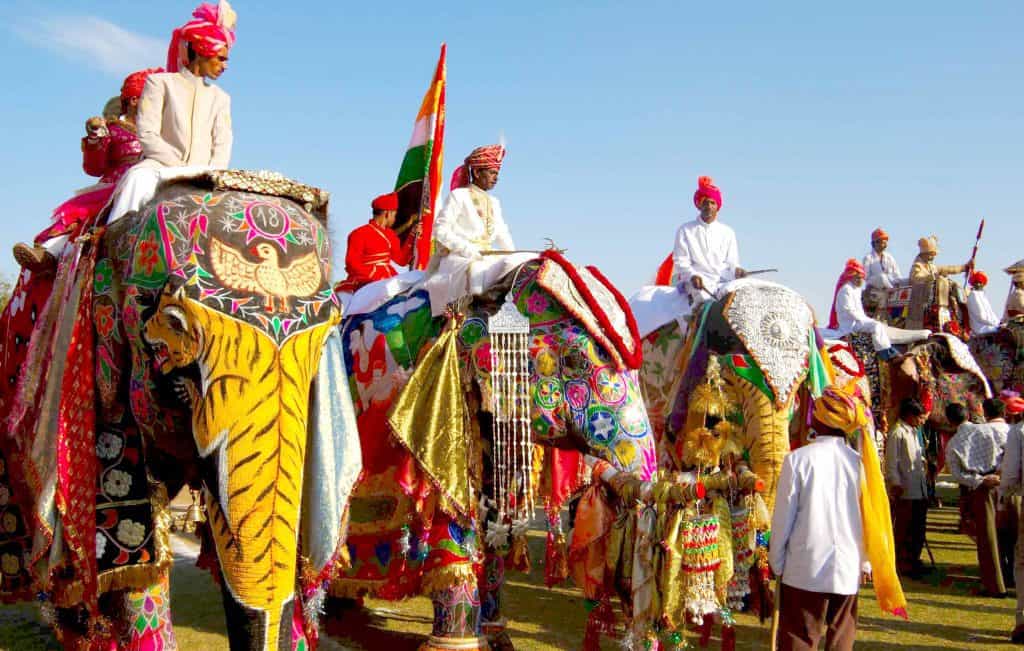
Renowned for its kaleidoscopic array of traditional Indian attire, melodious music, and mesmerizing dance performances, the Jaipur Elephant Festival is a visual feast for the senses. The elephants, bedecked in resplendent finery comprising intricate patterns of paint, ornate jewellery, and vibrant garments, stand as majestic symbols of the grandeur of Rajasthan’s heritage. Visitors are invited to partake in various activities, including elephant rides, interactions, and feeding sessions, fostering a deeper connection with these gentle giants.
Furthermore, the festival’s allure extends beyond its magnificent elephants, encompassing the participation of camels, horses, and the enchanting melodies of Rajasthani folk music. It is a celebration that not only delights the eyes but also resonates with the heart, offering a profound insight into the cultural tapestry of India’s desert state.
Chapchar Kut, Mizoram
This cultural festival; encompasses a vibrant array of dances, songs, and spirited festivities organized by the local communities of Mizoram. Serving as a jubilant herald of the transition from winter to the cherished season of spring, this festival holds profound significance. Concurrently, it coincides with the post-harvest phase, where farmers engage in the traditional practice of clearing agricultural remnants from their fields.
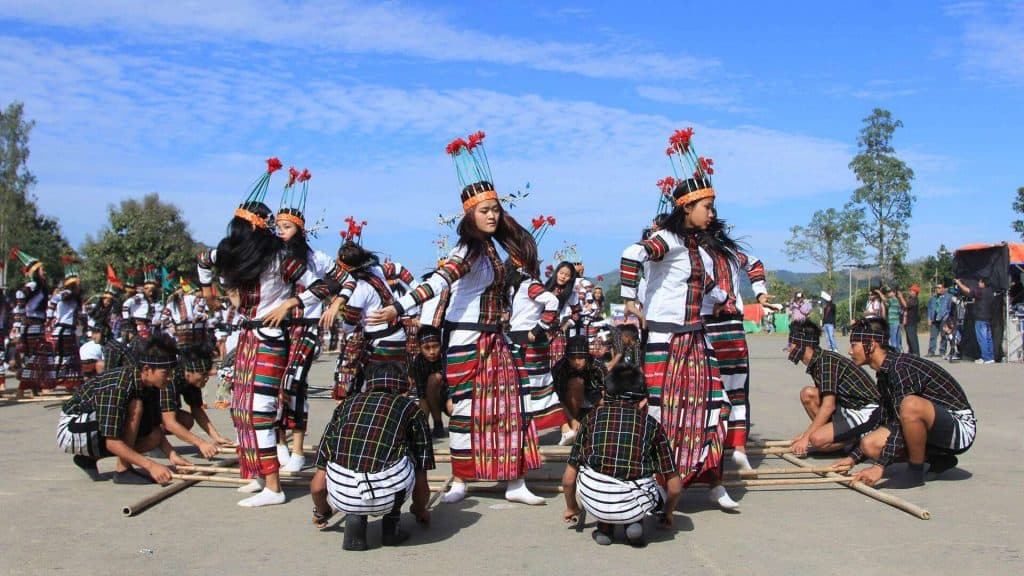
Held annually on the first Friday of March, this festival boasts a rich tapestry of elegant cuisine, colourful cultural performances, and distinctive rituals. Among its highlights are various competitions, notably featuring rapid consumption challenges, showcasing the local gusto and spirit.
While tourists are warmly welcomed to witness the performances and competitions, they are not eligible to participate in the contests. The festival‘s pinnacle attraction occurs on the first Thursday night, where the youth orchestrate lively gatherings around blazing bonfires, accompanied by spirited dances. Notably, the Chai dance holds particular significance within this festive tradition.
Culminating in a grand pageant, this festival serves as a vibrant celebration of community, tradition, and the exuberance of life’s seasonal rhythms.
Myoko, Arunachal Pradesh
The scenic landscapes of Arunachal Pradesh, approximately 115 km from the capital, Itanagar, lie the charming town of Ziro. Renowned worldwide for its annual Ziro Music Festival held in October, this town serves as a cultural hub for music enthusiasts.
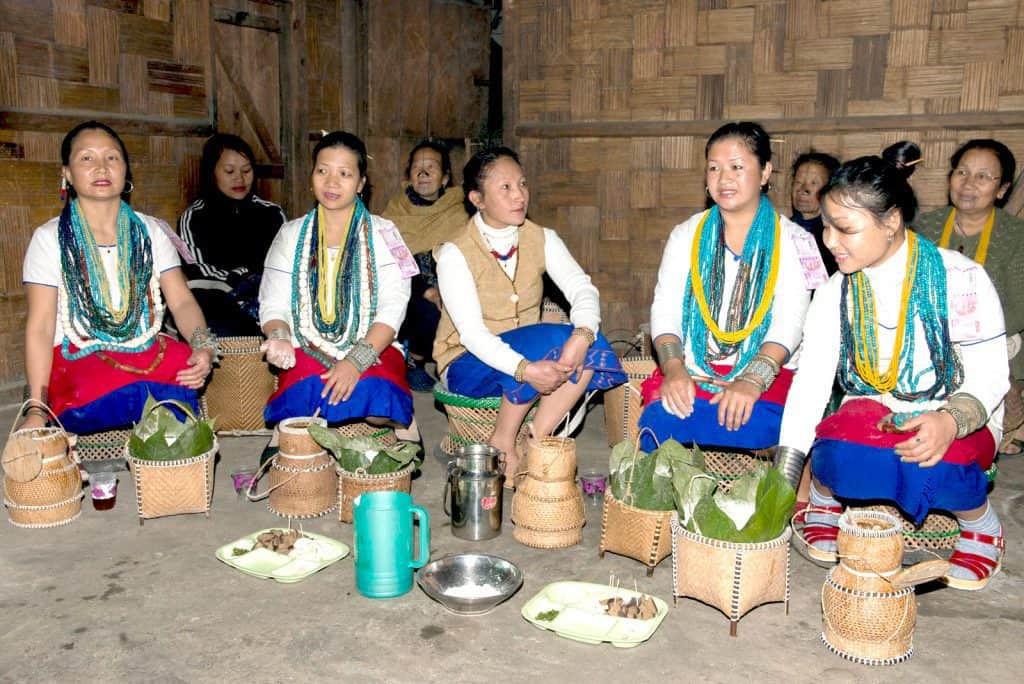
Yet, another gem in Ziro’s cultural calendar is the captivating Myoko festival, celebrated by the indigenous tribes of the region every March. During Myoko, the entire Ziro valley pulsates with energy as locals showcase traditional folk dances and martial arts, immersing visitors in the rich tapestry of their heritage. Myoko stands as a testament to the vibrant cultural diversity of India, offering a unique opportunity to experience the rhythms and traditions of Ziro’s indigenous communities.
Gudi Padwa, Maharashtra
Gudi Padwa, a significant festival predominantly celebrated in Maharashtra, resonates across various states of India, including Goa, Karnataka, Andhra Pradesh, Telangana, and portions of Gujarat and Rajasthan. Its parallel observance under different names in distinct regions, like Cheti Chand among Sindhis, underscores the diverse tapestry of Indian culture.
The festival‘s importance stems from its association with two revered legends. According to Hindu mythology, Gudi Padwa marks the auspicious day of Lord Brahma’s creation of the universe, falling on Chaitra Shukla Pratipada. Additionally, it commemorates the return of Lord Ram to Ayodhya after his triumph over the demon king Ravana and the culmination of his 14-year exile.
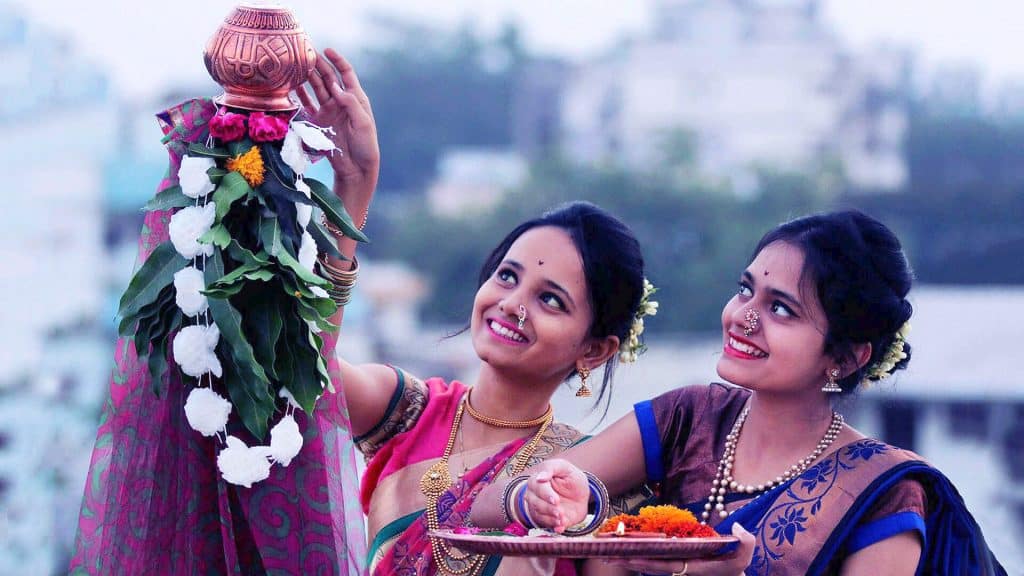
These narratives intertwine cosmic creation with the triumph of righteousness and the restoration of dharma. Beyond its mythological significance, Gudi Padwa symbolizes renewal, prosperity, and the onset of a new agricultural season. Communities come together to decorate their homes with colourful rangolis, hoist gudis (symbolic poles), and partake in festive feasts and cultural performances.
Shigmotsav, Goa
Shigmotsav, the vibrant spring festival celebrated by various communities across Goa, is colloquially known as Shigmo in the region. This annual celebration, which typically occurs in the month of Phalgun (February-March) according to the Hindu calendar, intertwines with the Indian festival of Holi, forming a jubilant amalgamation of traditions. The festival is a kaleidoscope of folk dances adorned with resplendent traditional costumes, drawing both the local populace and tourists alike.
Throughout the state, float parades portraying scenes from Hindu mythology and cultural facets grace the streets of major towns and cities, accompanied by spirited Romta Mell processions and performances of indigenous dances. Shigmo transcends urban centres, extending its joyous embrace to villages and rural locales across Goa, spanning a fortnight of revelry.
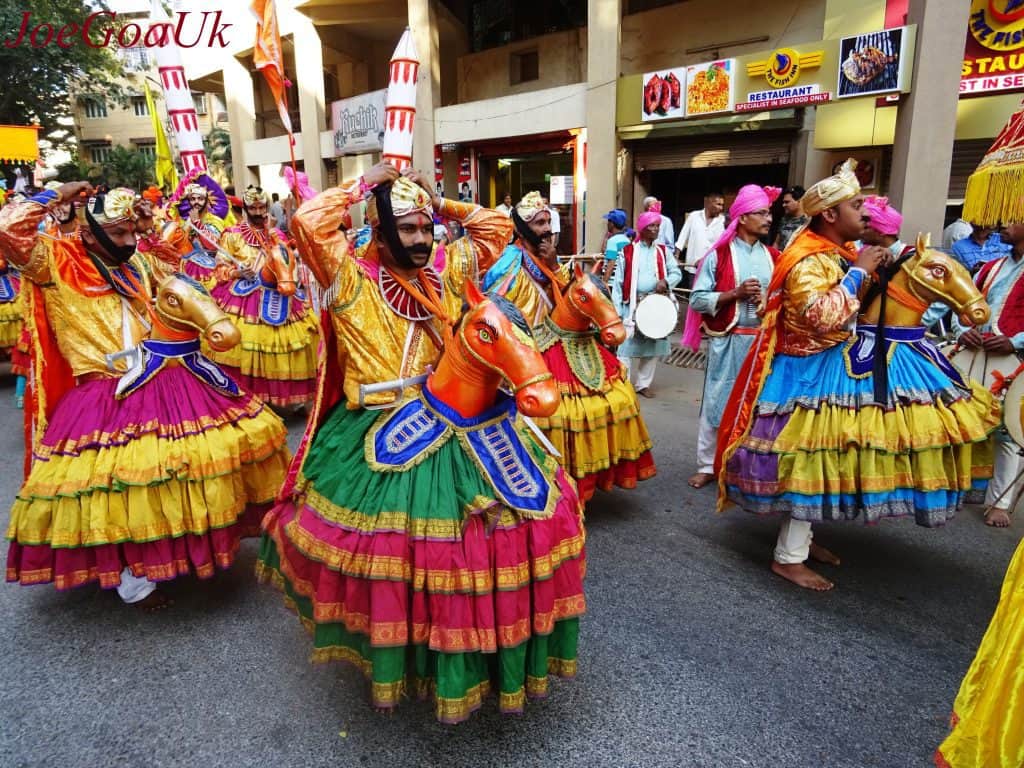
Commencing with the invocation of local folk deities on village stages amid rhythmic beats of traditional percussion instruments like the ghumat, dhol, mhadle, and tashe, the festival evolves into long processions known as Romta Mell, traversing from one village to another. The festivities showcase a tapestry of colourful costumes, mythological depictions, painted faces, and dynamic performances, including traditional folk dances like Ghodemodini, Gopha, and Phugadi, which serve as poignant reflections of Goan culture and heritage.
Thirunakkara Arattu, Kerala
Celebrated over ten days within the renowned Krishna temple of Ambalappuzha- Kerala, this festival begins with the ceremonial kodiyettam, or flag hoisting, and culminates in a sacred bath. The festivities encompass vibrant processions that traverse from the temple through the city streets and back, accompanied by a colourful array of elephants, musical ensembles, deities, and dancers.
Throughout the duration of the festival, martial arts demonstrations of Velakali and local instrumental music punctuate the processions, adding to the spectacle.
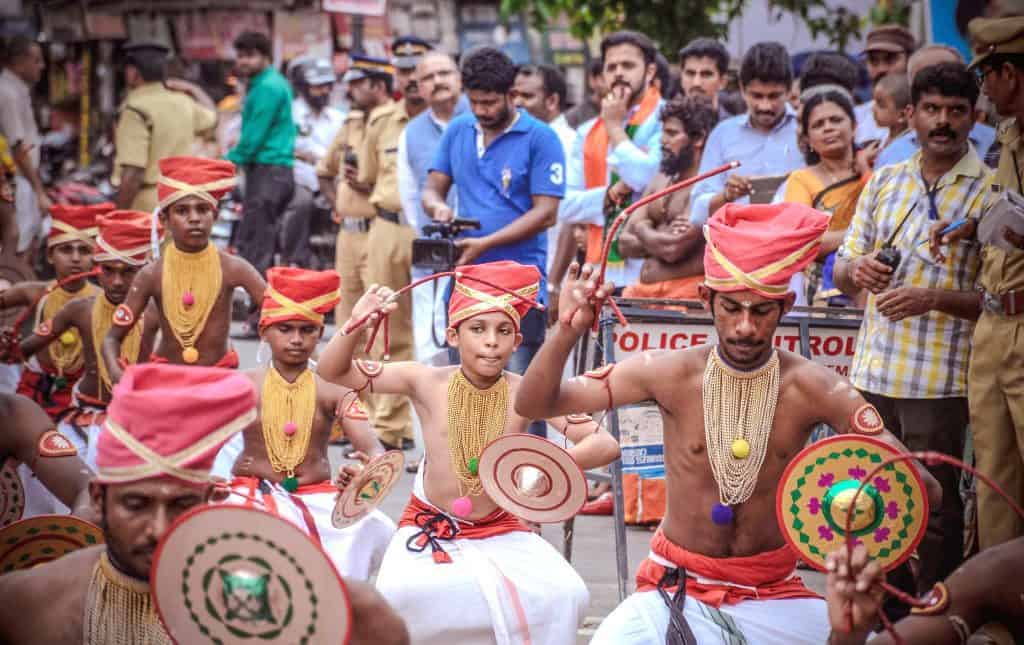
The Pallivettu day marks a significant moment when a lavish feast is served within the temple premises, open to all visitors irrespective of religious affiliation. Among the culinary delights, the renowned paalpayasam, a regional delicacy, is served to attendees.
Outside the temple grounds, numerous stalls offer an array of cultural souvenirs, religious artefacts, and small deity statues, providing attendees with an opportunity to immerse themselves in the local culture. Additionally, cultural performances abound throughout the festival, enriching the experience for all who partake in this grand celebration.
Chettikulangara Bharani, Kerala
The Chettikulangara Bharani festival celebrated at the Chettikulangara Temple near Mavelikara in Alappuzha-Kerala, is a dazzling spectacle dedicated to Goddess Bhagavathy. Taking place during the Malayalam month of Kumbham (February-March), this vibrant celebration animates the entire town, enveloping its landscape in a joyous ambience.
A central highlight of the festivities is the grand procession of Kettukazcha, wherein giant structures adorned with cloth, flowers, and ornaments grace the streets. These towering effigies, including chariots, horses, and iconic figures from Indian epics like Bhima, Hanuman, and Panchali, stand as towering symbols of devotion. Crafted by thousands of devotees hailing from the 13 karas or regions of the area, these structures, reaching heights of 90 to 100 feet, are paraded through city roads amidst the cheers of the populace and visitors alike.
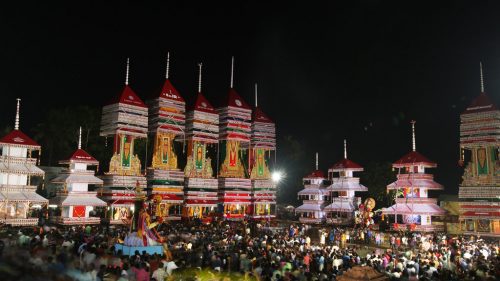
Moreover, the festival serves as a spirited platform for the villagers and karas to showcase their fervour by organizing various rituals and festivities. The procession to the temple, accompanied by mammoth idols and followed by exuberant crowds, adds to the spectacle. Additionally, the festival features the centuries-old ritual of Kuthiyottam, where young boys perform traditional dance steps to songs, adding to the cultural richness of the event.
For the Onattukara community, Kumbha Bharani offers not only spiritual fulfilment but also culinary delights. Specialities like Kuthiramoottil Kanji, Konjum Manga, and Astram tantalize the taste buds, enhancing the overall experience of this grand celebration.
Paripally Gajmela, Kerala
In Kerala, elephants are indispensable participants in every celebration, revered as embodiments of the elephant-headed deity, Ganesha. They play a sacred role in temple processions, where they bear the images of gods and goddesses on special occasions, accentuating the sanctity of the event. These temple elephants hold a privileged position, escorting the divine entourage with solemn dignity, further elevating the atmosphere of reverence during festivities.
Historically, affluent families in Kerala considered elephants as esteemed members of their households, reflecting their social status. Even today, elephant pageants are eagerly anticipated by the people of Kerala, adding to the vibrancy of their special occasions.
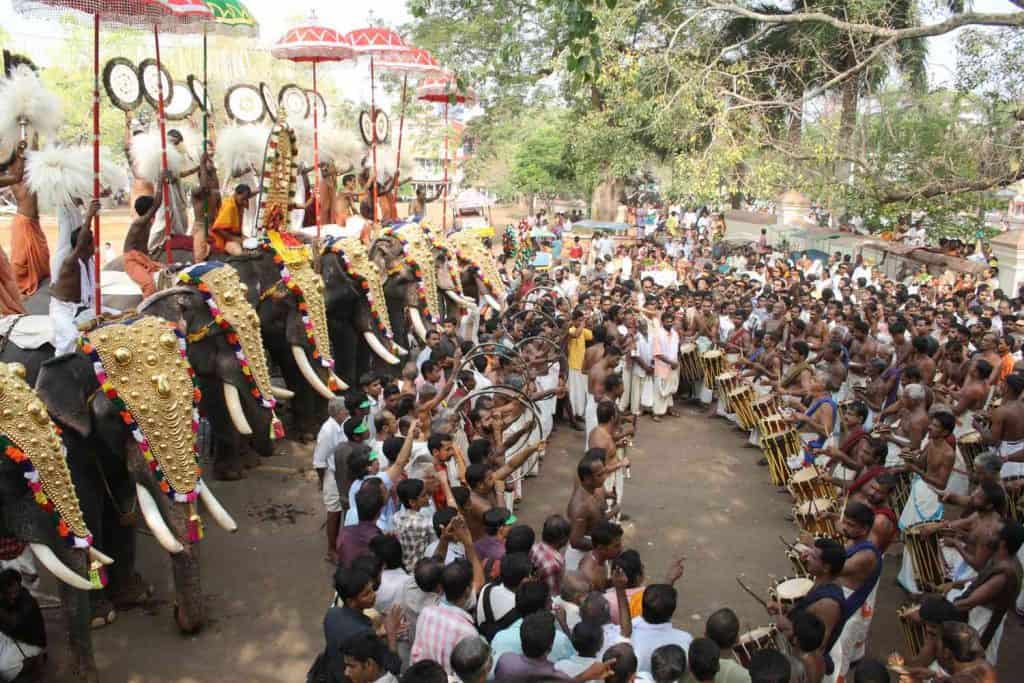
One notable elephant pageant is the Paripally Gajamela, held annually as part of the festivities at the Kodimootil Sree Bhadrakaali Temple in Paripally, Kerala. The term “Gajamela” combines “Gajam” (elephant) and “Mela” (fair) in Malayalam, capturing the grandeur of this unique event.
During the festival, devotees dedicate elephants to the temple of Goddess Bhadrakali in a ritual known as ‘nerch,’ believing it will bring prosperity. The procession, featuring a stunning array of caparisoned elephants, offers a breathtaking spectacle.
The pooram and vela festivals provide the perfect opportunity to witness these majestic creatures adorned in all their splendour, with mahouts atop, holding colourful parasols and peacock feather fans, accompanied by traditional musical ensembles. The elephant pageant is further enhanced by the synchronized changing of parasols, known as the kudamattam ritual, and cultural performances held throughout the festival days, adding to the festive ambience.
The festivals and traditions in March serve not only as a testament to the beauty of nature’s rebirth but also as a reflection of the enduring human capacity for renewal and celebration. Let this journey be a reminder that, in the heart of spring, lies the potential for growth, transformation, and a renewed sense of wonder in the world around us.
Read more: Latest



